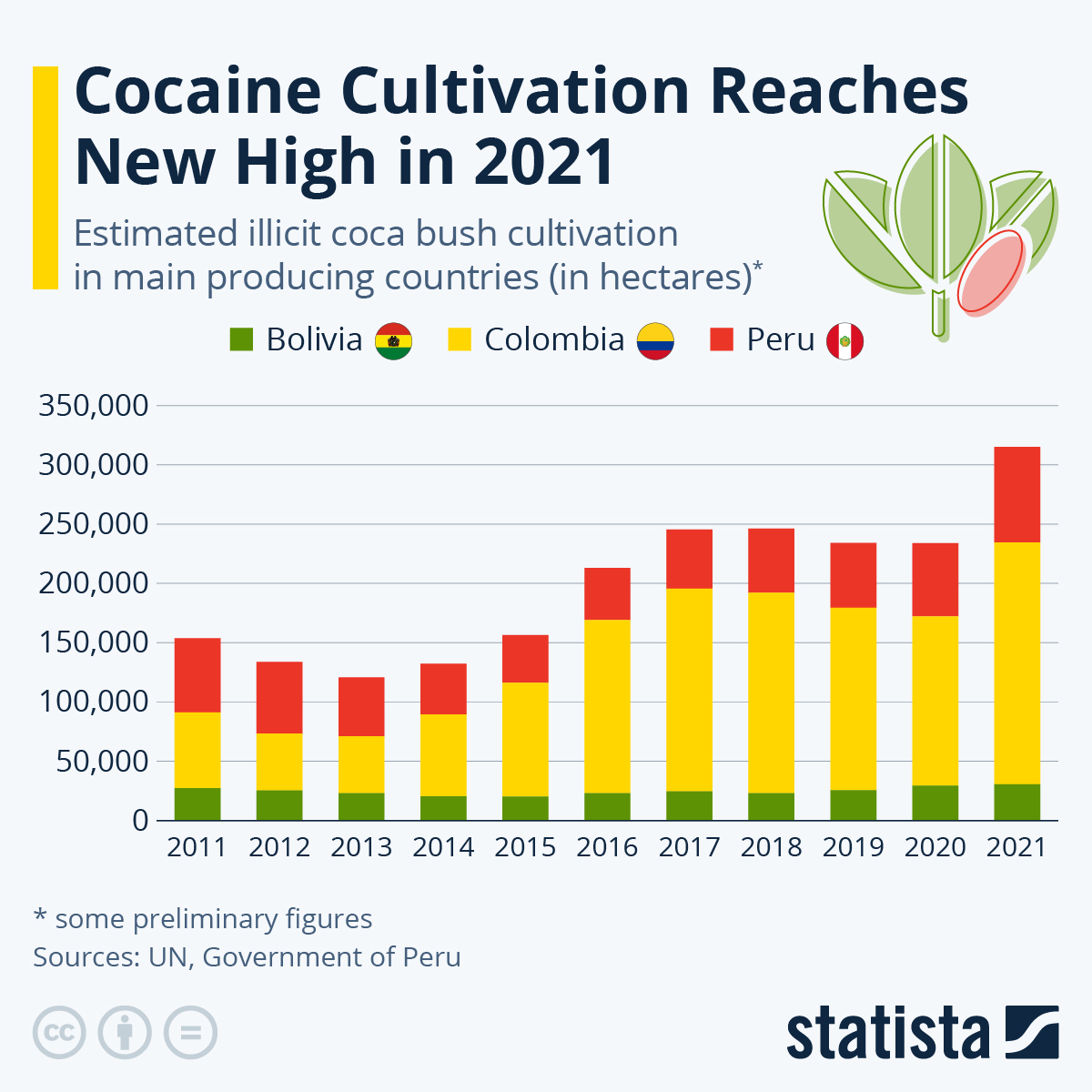According to a recently released report by the UN, illegal coca plant cultivation in South America reached a new high in 2021, increasing sharply by 35 percent from 2020. Together with the rise in cultivation, worldwide seizures of cocaine - which is manufactured from the coca plant - are also expected to shoot up. On Monday, a record seizure was made off the coast of Italy, where police took possession of around two tons of cocaine worth around $440 million floating in the water. The shipment is believed to have been thrown off a cargo ship and would have been collected by traffickers.
After the disruptive effects of the first year of the coronavirus pandemic ceased, 2021 saw coca cultivation rise again. In Colombia, the largest producer of the plant and its product cocaine, it increased by 42 percent. Peru also saw cultivation rise by almost one third. According to the report and Reuters, the rise can be seen in the context of a professionalization of coca growing, with more productive varieties and techniques used, at times in cooperation with Mexican cartels which have become huge buyers of Colombia's cocaine.
Coca production had previously fallen in Colombia even before the pandemic. A peace deal with the nation's long-active FARC rebel group signed in 2016 included provisions about substituting coca with other crops. At the same time, Colombia started efforts to manually eradicate coca plants after having stopped fumigation efforts in 2015. Despite having been under the leadership of hardliner Ivan Duque until mid-2022, eradication of coca crops decreased in Colombia to just over 100,000 hectares in 2021, down from 130,000 ha in 2020, while being about the same as the area eradicated in 2019.





















